Lesson 16Parallel Lines and the Angles in a Triangle
Let’s see why the angles in a triangle add to 180 degrees.
Learning Targets:
- I can explain using pictures why the sum of the angles in any triangle is 180 degrees.
16.1 True or False: Computational Relationships
Is each equation true or false?
16.2 Angle Plus Two
Here is triangle .
Select the Midpoint tool
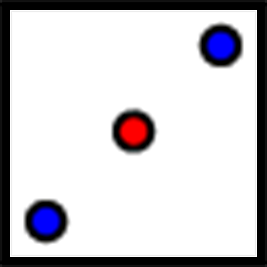
-
Rotate triangle around the midpoint of side . Right click on the point and select Rename to label the new vertex .
-
Rotate triangle around the midpoint of side . Right click on the point and select Rename to label the new vertex .
-
Look at angles , , and . Without measuring, write what you think is the sum of the measures of these angles. Explain or show your reasoning.
-
Is the measure of angle equal to the measure of any angle in triangle ? If so, which one? If not, how do you know?
-
Is the measure of angle equal to the measure of any angle in triangle ? If so, which one? If not, how do you know?
-
What is the sum of the measures of angles , , and ?
16.3 Every Triangle in the World
Here is . Line is parallel to line .
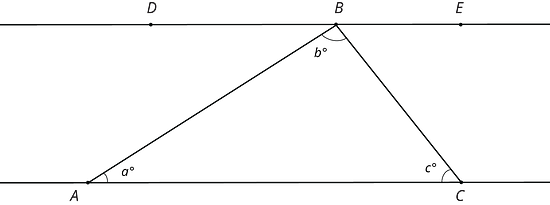
-
What is ? Explain how you know.
- Use your answer to explain why .
-
Explain why your argument will work for any triangle: that is, explain why the sum of the angle measures in any triangle is .
Are you ready for more?
-
Using a ruler, create a few quadrilaterals. Use a protractor to measure the four angles inside the quadrilateral. What is the sum of these four angle measures?
-
Come up with an explanation for why anything you notice must be true (hint: draw one diagonal in each quadrilateral).
16.4 Four Triangles Revisited
This diagram shows a square that has been made by images of triangle under rigid transformations.

Lesson 16 Summary
Using parallel lines and rotations, we can understand why the angles in a triangle always add to . Here is triangle . Line is parallel to and contains .

A 180 degree rotation of triangle around the midpoint of interchanges angles and so they have the same measure: in the picture these angles are marked as . A 180 degree rotation of triangle around the midpoint of interchanges angles and so they have the same measure: in the picture, these angles are marked as . Also, is a straight line because 180 degree rotations take lines to parallel lines. So the three angles with vertex make a line and they add up to (). But are the measures of the three angles in so the sum of the angles in a triangle is always !
Lesson 16 Practice Problems
For each triangle, find the measure of the missing angle.
Is there a triangle with two right angles? Explain your reasoning.
In this diagram, lines and are parallel.
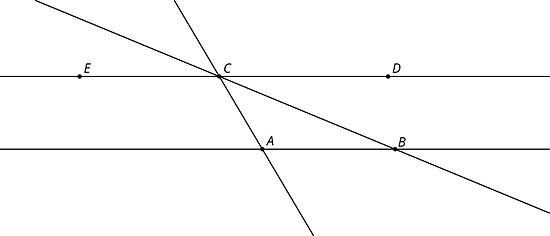
Angle measures and angle measures .
- What is ?
- What is ?
- What is ?
The two figures are congruent.
- Label the points , and that correspond to , , and in the figure on the right.
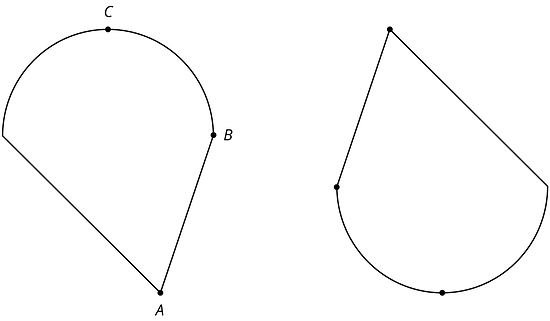
- If segment measures 2 cm, how long is segment ? Explain.
- The point is shown in addition to and . How can you find the point that corresponds to ? Explain your reasoning.
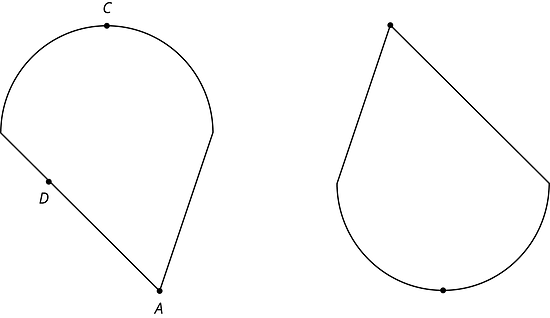
- Label the points , and that correspond to , , and in the figure on the right.